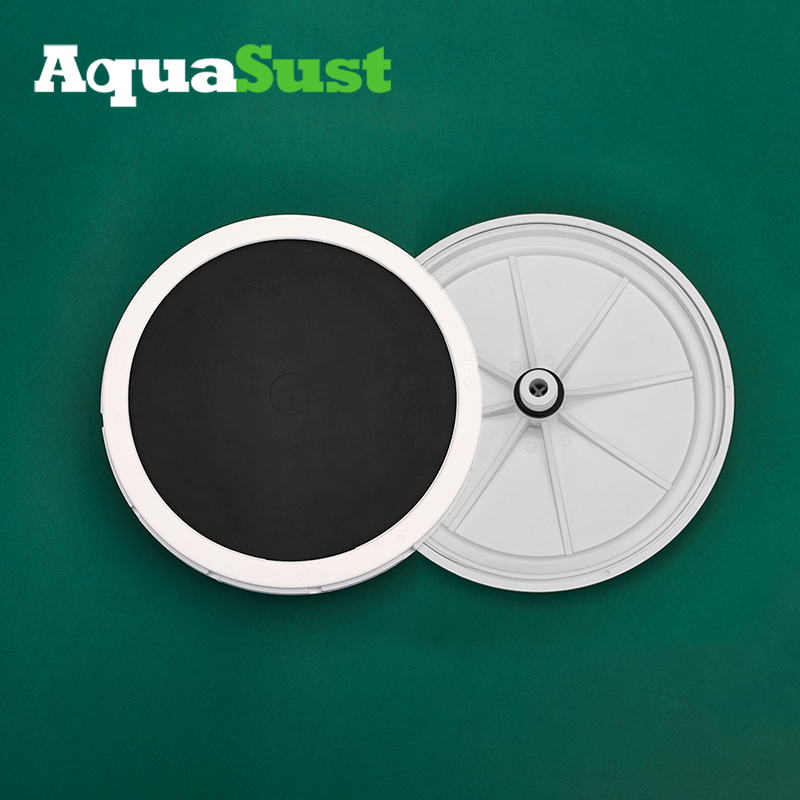 +86-15267462807
+86-15267462807
Oxygen transfer is a critical aspect of many industrial processes, from wastewater treatment to aquaculture. The choice of diffuser plays a significant role in determining the efficiency and effectiveness of oxygenation.
Characteristics: Produce small bubbles, resulting in high oxygen transfer efficiency and minimal energy consumption.
Applications: Suitable for various applications, including wastewater treatment, aquaculture, and industrial processes.
Advantages: High oxygen transfer rates, low energy consumption, and minimal clogging.
Disadvantages: May require more frequent cleaning due to smaller bubble size.
Bubble Size: Typically less than 1 mm.
Material: Often made of sintered metal, ceramic, or plastic
Oxygen Transfer Efficiency: Generally the highest among all diffuser types.
Applications: Wastewater treatment, aquaculture, and industrial processes.
Parameters:
Porosity: The percentage of void space in the diffuser material.
Bubble Size Distribution: The range of bubble sizes produced.
Diffuser Area: The total surface area of the diffuser.
Characteristics: Produce larger bubbles, offering lower oxygen transfer efficiency but potentially higher flow rates.
Applications: Often used in aeration systems with high flow rates or where clogging is a concern.
Advantages: Less prone to clogging, higher flow rates.
Disadvantages: Lower oxygen transfer efficiency compared to fine bubble diffusers.
Parameters:
Diffuser Opening Size: The size of the holes in the diffuser.
Air Distribution Pattern: The way air is distributed by the diffuser.
Diffuser Depth: The depth of the diffuser below the liquid surface.
Characteristics: Utilize porous membranes to distribute air into the liquid, providing fine bubble aeration.
Applications: Widely used in wastewater treatment and aquaculture due to their high efficiency and durability.
Advantages: High oxygen transfer rates, long service life, and resistance to clogging.
Disadvantages: Can be more expensive than other diffuser types.
Parameters:
Membrane Thickness: The thickness of the membrane.
Membrane Pore Size: The size of the pores in the membrane.
Membrane Area: The total surface area of the membrane.
Characteristics: Consists of a perforated disc that distributes air into the liquid.
Applications: Often used in wastewater treatment and industrial processes.
Advantages: Relatively simple design, easy to install and maintain.
Disadvantages: May have lower oxygen transfer efficiency compared to other diffuser types.
Material: Typically made of plastic or metal. EPDM(Whye use EPDM material for diffuser).
Oxygen Transfer Efficiency: Moderate compared to fine bubble and membrane diffusers.
Applications: Wastewater treatment and industrial processes.
Parameters:
Disc Diameter: The diameter of the disc.
Hole Size and Pattern: The size and arrangement of the holes in the disc.
Diffuser Spacing: The distance between diffusers.

Bubble Tube Diffusers: Similar to disc diffusers, but with a cylindrical shape.
Spiral Diffusers: Use a spiral design to create a swirling flow pattern.
Jet Diffusers: Create a high-velocity jet of air or gas.
Factors to Consider When Selecting a Diffuser
Oxygen Transfer Efficiency: The diffuser's ability to transfer oxygen into the liquid is crucial. Fine bubble diffusers generally offer higher efficiency.
Energy Consumption: The energy required to operate the diffuser should be considered, especially for long-term use.
Clogging Resistance: The diffuser's susceptibility to clogging depends on the liquid's properties and the diffuser's design.
Flow Rate: The required flow rate of air or gas should be considered when selecting a diffuser.
Installation and Maintenance: The ease of installation and maintenance should also be taken into account.
Liquid Properties: The properties of the liquid being aerated, such as viscosity and surface tension, can affect diffuser performance.
Aeration Basin Design: The design of the aeration basin can influence the effectiveness of the diffuser.
Maintenance: Regular maintenance, such as cleaning and inspection, is essential for ensuring optimal diffuser performance.